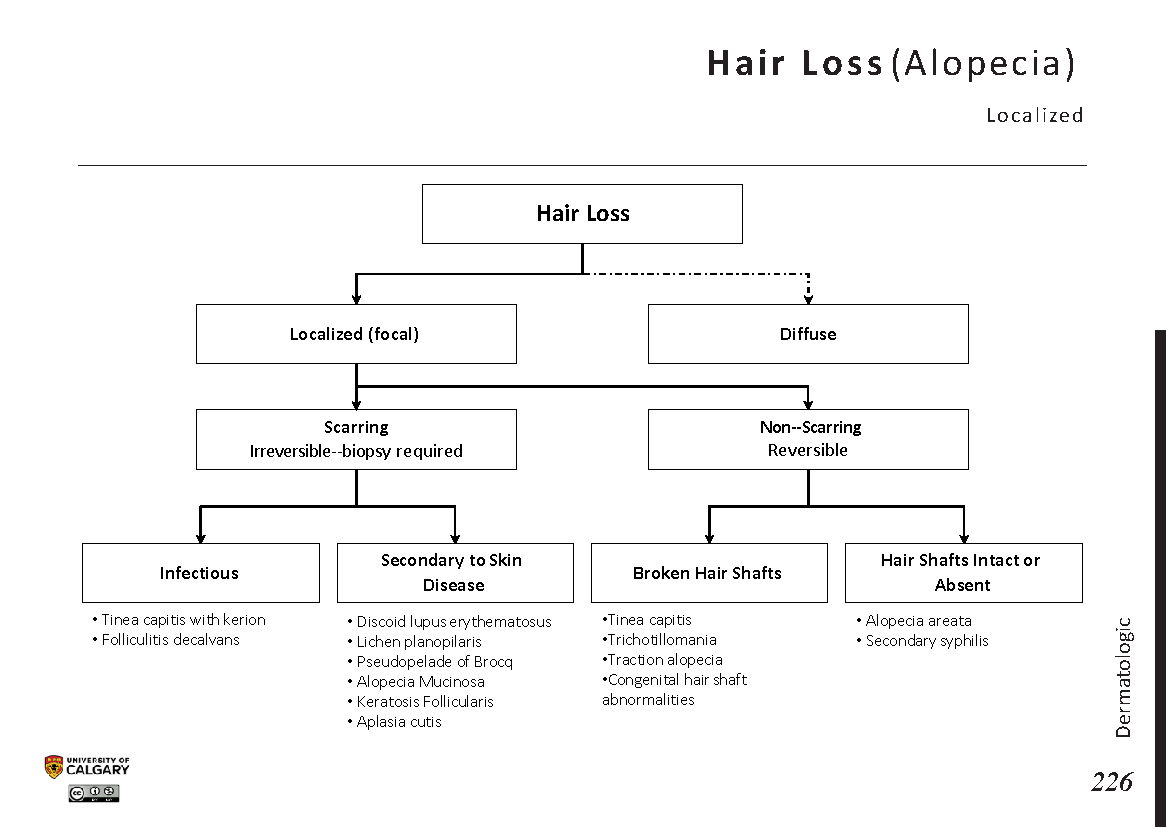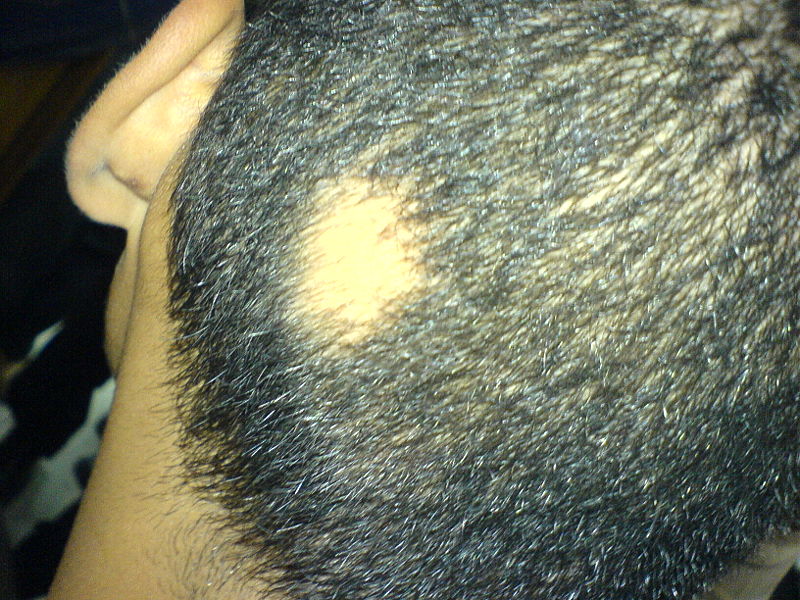Alopecia Areata, often abbreviated as AA, is a condition that affects millions of people worldwide. It is characterized by sudden, patchy hair loss that can occur on the scalp or other parts of the body. While it may not pose a direct threat to physical health, its psychological and emotional impact can be significant. This article delves into the intricacies of Alopecia Areata, exploring its causes, symptoms, and available treatments to provide a comprehensive understanding of this condition.

What is Alopecia Areata?
Alopecia Areata is an autoimmune disorder where the immune system mistakenly attacks hair follicles, leading to hair loss. The condition typically manifests as small, round patches of baldness on the scalp, but it can also affect eyebrows, eyelashes, and body hair. In some cases, it progresses to more severe forms, such as Alopecia Totalis (loss of all scalp hair) or Alopecia Universalis (loss of all body hair).
Symptoms of Alopecia Areata
- Patchy Hair Loss: The most common symptom is the appearance of smooth, coin-sized bald patches on the scalp or other areas.
- Exclamation Mark Hairs: Some individuals notice short, broken hairs that taper near the scalp, resembling exclamation marks.
- Nail Changes: Pitting or ridges on fingernails or toenails may occur in some cases.
- Rapid Onset: Hair loss often occurs suddenly, sometimes within a few days.
Causes of Alopecia Areata
The exact cause of Alopecia Areata remains unclear, but researchers believe it involves a combination of genetic, environmental, and immune system factors. Below are some key contributors to the development of this condition.
Autoimmune Response
In Alopecia Areata, the immune system mistakenly identifies hair follicles as foreign invaders and launches an attack against them. This disrupts the normal hair growth cycle, leading to inflammation around the follicles and subsequent hair loss. While the precise trigger for this immune response is unknown, it is believed to involve a complex interplay of genetic predisposition and external factors.
Genetic Factors
Research indicates that genetics play a significant role in Alopecia Areata. Individuals with a family history of the condition are at a higher risk of developing it themselves. Studies have identified several genes associated with immune system regulation that may increase susceptibility to this disorder.
Environmental Triggers
Certain environmental factors may act as triggers for Alopecia Areata in genetically predisposed individuals. These include:
- Stress: Emotional or physical stress can exacerbate or initiate episodes of hair loss.
- Viral Infections: Some studies suggest that viral infections might contribute to the onset of the condition.
- Allergies: There is evidence linking allergies and atopic conditions, such as asthma or eczema, to an increased risk of Alopecia Areata.
Diagnosing Alopecia Areata
Diagnosing Alopecia Areata typically involves a thorough medical evaluation by a healthcare professional. The process may include:
Physical Examination
A doctor will examine the affected areas and look for characteristic signs, such as patchy hair loss or exclamation mark hairs. They may also assess the nails for abnormalities.
Medical History
Understanding the patient’s medical history is crucial. A history of autoimmune diseases, allergies, or family members with similar conditions can provide valuable clues.
Biopsy and Tests
In some cases, a scalp biopsy may be performed to confirm the diagnosis. Blood tests may also be conducted to rule out other underlying conditions, such as thyroid disorders or nutritional deficiencies.
Treatment Options for Alopecia Areata
While there is no definitive cure for Alopecia Areata, various treatments aim to promote hair regrowth and manage symptoms. The effectiveness of these treatments varies from person to person, and outcomes can be unpredictable.
Topical Treatments
Topical medications are often the first line of treatment for mild cases of Alopecia Areata. These include:
- Corticosteroids: Applied directly to the affected areas, corticosteroids help reduce inflammation and suppress the immune response.
- Minoxidil: Commonly known as Rogaine, this over-the-counter solution can stimulate hair growth when used consistently.
- Anthralin: A topical medication that alters immune function in the skin, potentially promoting hair regrowth.
Injections
Corticosteroid injections are another option for treating localized patches of hair loss. Administered directly into the affected areas, these injections can reduce inflammation and encourage hair regrowth. However, repeated sessions may be required, and results are not guaranteed.
Oral Medications
For more extensive cases, oral medications may be prescribed. These include:
- Corticosteroids: Oral steroids can suppress the immune system and halt the progression of hair loss, but long-term use carries potential side effects.
- Immunosuppressants: Drugs like methotrexate or cyclosporine may be used to modulate the immune response, though they require careful monitoring due to risks.
Light Therapy
Phototherapy, or light therapy, involves exposing the scalp to ultraviolet light under medical supervision. This treatment aims to stimulate hair follicles and reduce inflammation. It is often combined with other therapies for enhanced effectiveness.
Emerging Treatments
Researchers are continually exploring new treatment options for Alopecia Areata. Some promising developments include:
- JAK Inhibitors: Janus kinase inhibitors, originally developed for rheumatoid arthritis, have shown potential in promoting hair regrowth in clinical trials.
- Platelet-Rich Plasma (PRP): PRP therapy involves injecting concentrated platelets from the patient’s blood into the scalp to stimulate healing and hair growth.
Lifestyle and Coping Strategies
Beyond medical treatments, adopting certain lifestyle changes and coping strategies can help individuals manage Alopecia Areata effectively.
Stress Management
Since stress can worsen symptoms, incorporating relaxation techniques such as meditation, yoga, or deep breathing exercises can be beneficial. Seeking support from friends, family, or support groups can also alleviate emotional distress.
Dietary Considerations
Maintaining a balanced diet rich in vitamins and minerals supports overall health and may aid in hair regrowth. Nutrients like biotin, zinc, and iron are particularly important for hair health.
Hair Care Practices
Gentle hair care practices, such as avoiding harsh chemicals and excessive heat styling, can prevent further damage to fragile hair. Using mild shampoos and conditioners designed for sensitive scalps may also be helpful.
Emotional Support
Dealing with visible hair loss can take a toll on self-esteem and mental health. Counseling or therapy can provide tools to cope with the emotional challenges associated with Alopecia Areata. Additionally, connecting with others who share similar experiences through online forums or local support groups can foster a sense of community and understanding.
Living with Alopecia Areata
Alopecia Areata is a chronic condition that requires patience and resilience. While some individuals experience spontaneous remission, others may face recurrent episodes of hair loss. Understanding the nature of the condition and exploring available resources can empower those affected to live fulfilling lives despite its challenges.





